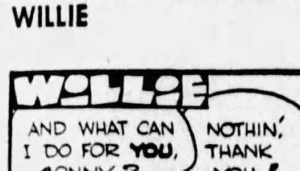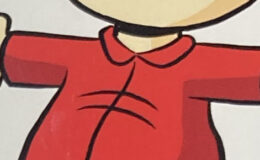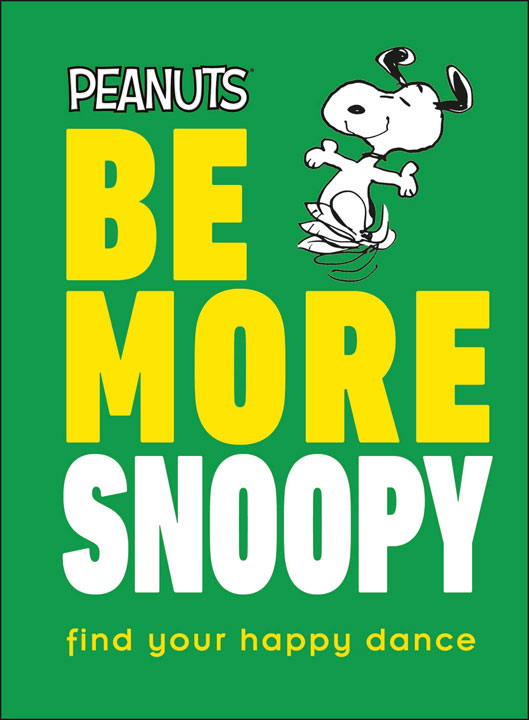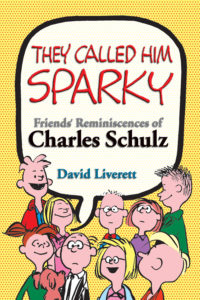
Benjamin L. Clark, my august collaborator on the lengthy-named and well-received Charles M. Schulz: The Art and Life of the Peanuts Creator in 100 Objects, reminds me that the Peanuts corner title box was not actually printed on to the art boards used to draw Peanuts for the first several years; it had to be pasted on until an appropriate batch of art boards was printed in 1954. Then it was printed, first with quotation marks (“Peanuts”) , then without, and would finally disappear from the art boars in 1977.
But while most other strips did not have the title printed in the panel, Peanuts was not unique in having it, nor even first. And the main example I find is of a strip with a very interesting, kind of convoluted history. Leonard Sansone created his single panel cartoon feature “GI Wolf”, which was created for military newspapers during World War II. Folks with their toes in comics history may be aware of “Male Call”, Milton Caniff’s strip for the military papers which featured lots of alluring women characters, as that’s what the young males often kept professionally isolated from women were thought to want. “GI Wolf” has some of that same energy, as it’s gag panels about a lusty serviceman (literally depicted as a wolf wearing a military uniform or, as one wag put it, “a wolf in Jeep’s clothing”) being fascinated (and at times by modern standards — and even the standards of the day, judging by character reactions — inappropriate with) attractive women.
Even while in the military papers, the feature was retitled “The Wolf”. In 1945, a book collection was issued. Then at the start of ’46, Sansone brought his creation to mainstream newspaper distribution. Over the next couple years, The Wlf stopped being depicted as a literal wolf, and became just a leering young man, now in civilian clothing. The title of the panel was changed from “The Wolf” to “Wally”, as part of the strip shedding its animal skin.
 The series grew its cast, including the introduction of an aggressive and obnoxious boy named Willie, who became the focal point of many of the panels.
The series grew its cast, including the introduction of an aggressive and obnoxious boy named Willie, who became the focal point of many of the panels.
And then, in 1948, Wally got utterly FritziRitzed. Suddenly the “Wally” panel was gone, and there in its stead was a four panel strip, named (and about) “Willie”. And that strip came with the title built into the first panel.
Now, not every newspaper that ran the strip actually wanted that title in the panel. After all, they had their standard title format with the name above the strip. So some whiting out can be found.
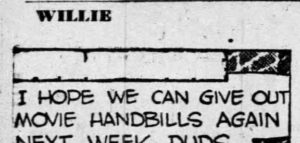 There’s a couple thing that I should point out about “Willie”:
There’s a couple thing that I should point out about “Willie”:
- It was designed so that it could be run as two tiers of two panels apiece, and indeed appeared that way in many newspapers.
- It was distributed by United Feature Syndicate.
Now if your mind is telling you “hey, both of those things are true about Peanuts,” you are correct, and you win the kewpie doll (or maybe in this case we should replace it with a snewpie doll.) It seems likely that someone at the syndicate thought that a square strip might end up placed anywhere in the paper, and could be used as an easy column filler if the paper didn’t have to worry about adding a title to it.
